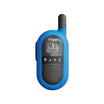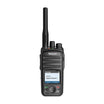In today's diverse work environments, where many individuals often find themselves working in isolation, the "Lone Worker" feature in radio communications has become an essential safety tool. This function is specifically designed to support personnel who work alone, providing an automatic system of alert in situations where a worker may be unable to call for help.
Understanding the Lone Worker Feature
The Lone Worker feature is a safety mechanism integrated into two-way radios, aiming to monitor the well-being of individuals working in isolation. When activated, this feature requires the lone worker to interact with their radio at predetermined intervals. If the radio remains inactive beyond the set time, it triggers an automatic alarm, signaling that the worker may need assistance.
How the Lone Worker Function Operates
The operation of the Lone Worker feature is both simple and effective. Users activate the function on their radios, which then starts a timer. If there is no interaction with the radio (such as pressing a button or sending a transmission) within the preset period, the radio assumes there could be a problem. It then automatically sends an alert signal to a central monitoring system or directly to other radios in the network, calling for immediate attention to the potential incident.
The Importance of the Lone Worker Feature
Implementing the Lone Worker feature in two-way radio systems brings several significant benefits:
- Enhanced Worker Safety: It offers an extra layer of security for individuals working in remote, hazardous, or otherwise isolated conditions, ensuring timely assistance in emergency situations.
- Operational Efficiency: It allows organizations to monitor the safety of their employees effectively without constant manual check-ins, thereby improving overall operational efficiency.
- Peace of Mind: For the workers themselves, knowing that their radio has a built-in mechanism to call for help if they are incapacitated can provide considerable peace of mind.
Conclusion
The Lone Worker feature in two-way radios represents a critical advancement in ensuring the safety and security of employees working in solitary conditions. By automating the call for help, it provides a lifeline for those who might otherwise be left vulnerable in emergency situations. For businesses and organizations where employees regularly work alone, integrating this feature into their communication systems is not just an investment in technology—it's an investment in human safety and well-being.












































